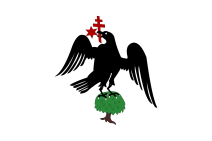Romania ( Romanian: România) is a country located in Balkans, with a population of approximately 19.5 million people. It is bordered by Ukraine to the north, Moldova to the northeast, Hungary to the west, Serbia to the southwest, and Bulgaria to the south.
History
Meddieval Era
Romanian history in this era began in the 14th century with the establishment of the Principality of Wallachia, located in the southern part of Transylvanian Alps and extending to the Danube, and the Principality of Moldavia, located from the Outer Eastern Carpathians to the Dniester river.
The Wallachian ruler, Basarab I, founded the Principality of Wallachia in 1310. Over time, Wallachia became a crucial buffer zone between the Ottoman Empire to the south and the Hungarian Kingdom to the north. The Wallachian princes struggled to maintain their independence, often forming alliances with other regional powers, such as Poland and Hungary. The most famous Wallachian prince, Vlad III, also known as Vlad the Impaler, achieved notoriety for his brutal tactics in defending Wallachia against the Ottomans.
The Principality of Moldavia, was founded by Dragos in 1359. Moldavia had a rocky relationship with the Ottoman Empire, which threatened the principality with invasion multiple times. The most significant Moldavian ruler, Stephen the Great ( after his canonization by the Romanian Orthodox Church, Stephen the Great and Saint), was known for his military prowess and diplomacy, which allowed Moldavia to maintain a degree of autonomy despite repeated Ottoman invasions.
Unification of Principalities of Wallachia and Moldovia
In 1859, the two principalities of Moldavia and Wallachia were united under the name "Unirea Moldovei și Țării Românești", which translates to the unification of Moldavia and Wallachia. This historic event is also referred to as the unification of the Romanian Principalities or the Little Union. The unification was made possible by the election of Alexandru Ioan Cuza as the prince of both regions, leading to the creation of a larger, more cohesive Romanian state.
Principality of Romania (1859–1881)
Cuza's rule was marked by a strong commitment to modernization and reform. He implemented a series of political, economic, and social reforms aimed at improving the lives of the Romanian people and strengthening the new state.
One of his earliest acts as ruler was the abolition of serfdom and the liberation of the Romanian peasantry. He also introduced a modern legal system and reformed the educational system by establishing the University of Bucharest and creating a network of primary and secondary schools.
In addition to his domestic reforms, Cuza also sought to strengthen Romania's position on the international stage. He pursued a policy of neutrality in the face of mounting pressure from the Ottoman Empire and Russia, both of which still had significant influence in the region. He also sought to establish closer ties with other European powers, such as France and Great Britain.
Despite his efforts to modernize and reform Romania, Cuza's rule was also marked by political turmoil and opposition from conservative forces in the country. In 1864, he attempted to further consolidate his power by dissolving the country's two separate assemblies and replacing them with a single national assembly. This move was met with widespread opposition, and a series of protests and uprisings erupted across the country.
In 1866, a group of politicians and army officers staged a coup and forced Cuza to abdicate.
In same year, Karl von Hohenzollern-Sigmaringen (later now as Carol I), son of Karl Anton Hohenzollern-Sigmaringen,


